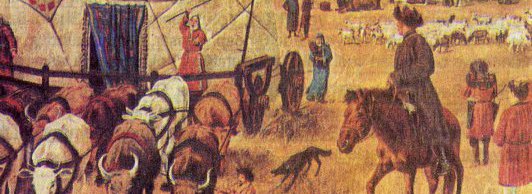
Nevin Halıcı
The information related to culinary and food cultures of nomadic Turks living in central Asia are limited and depend on estimations. Turks; appropriate to the nomadic life in Central Asia, were consuming horse, sheep, wild goose, cattle, wheat and their products, phyllo, rolled-out borek or other dough based products, milk, yogurt, kumiss and tarhana.
In the Gokturk memorials, interpreted by Thomson and Radloff, it stated that Bilge Kagan invited guests for the mourning ceremony of his brother and served food in his memory. Within the same memorials the two types of Turkish foods mentioned were venison and rabbit meats. In the Orhun Memorials terms like “tok”(full), “aç” (hungry), “aş”, “azuk” (dish), were also found.
In the beginning, Nomad Turks’ livelihood was based on hunting. However in D’ohsson explains the changes in his book named Traditions in 18th Century Turkey on page 27. “Most among them are very compassionate towards animals. Whether they are the ruler, statesman or poor, you can’t find someone who keen on hunting.”
Source
Nevin Halıcı, Türk Mutfağı; Oğlak Yayınları, İstanbul 2009 (s. 17-18)